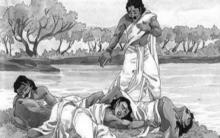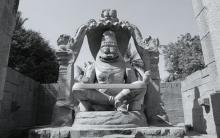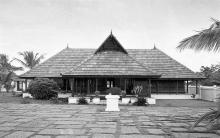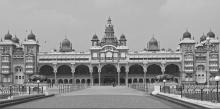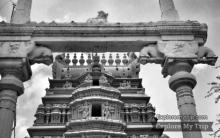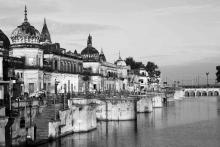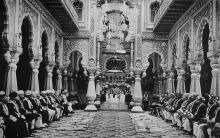One of the most fascinating tales in the Mahabharata is the dialogue between Yudhishtira and Yama on the banks of the enchanted pool. This episode is popularly known as the ‘Yakshaprashna.’ The characters of the Mahabharata, so richly sketched by Vyasa, find relevance even today among readers. Never one to judge his characters or paint them with a single shade of color, Vyasa highlights the ridiculous and the sublime in the characters at various points in the epic.
Author:Hari Ravikumar
माणिक्यक्रमणं लोके मङ्गलाय भवेत्किल |
मङ्गले सहजेsस्माकं माणिक्यात्किं प्रयोजनम् ||
पूषवाडान्वयाब्धीन्दो स्वस्ति नारायणप्रभो |
नेत्रे गात्रे तथा श्रोत्रे वक्त्रे पुष्पेषुशोभ ते ||
यागक्रियार्थं खलु वृक्षराजो
वर्णक्रियार्थं खलु भृङ्गराजः |
तुलाक्रियार्थं खलु विट्तराजो
न किञ्चिदर्थं भुवि नर्सराजः ||
Naḍimiṇṭi Maṅgaleśvaraśāstri was a scholar, who was born in a town called Nāgūru of the Pārvatīpura province in the Viśākhapaṭṭaṇam district of the erstwhile Andhra Pradesh. He lived in the 19th century and was an authority on language and grammar. In his wit, he was like the famous Rāmakṛṣṇa of Tenāli.
त्वमसि रसिकमध्ये मङ्गलस्वानरम्यः
समरमृदितशत्रुः किं च रम्भारतीच्छुः |
दरधरहृदयोsहं नेश्वरश्रीर्जितोsन्यैः
मम वितर समृद्ध्यै मन्दिरं का क्षतिस्ते ||
नृसिंहाख्ये गण्डशैले वरदाख्यो महामणिः |
निपत्य खलु तत्तैव व्यशीर्यत सहस्रधा ||
अनाघ्रातव्यङ्ग्यैरपरिचितशब्दार्थरचनै
रबुद्धालङ्कारैरनवगतभावोज्ज्वलरसैः |
यशोमात्रं कूजन्नवनवदुराशैः कुकविभि
र्दुरध्वे व्याकृष्टा भगवति विपन्नासि कविते ||
In sanatana dharma, birthdays of great people are celebrated as jayantis and death anniversaries are remembered as aradhanas. Sri Rama Navami is the birthday of Rama, the unparalleled hero known as the embodiment of dharma, dignity, honor, compassion, and capability. It is often believed that Rama was the avatara of the great deity Vishnu.
67.
नीवारशूकवत्तन्वी विद्युल्लेखेव भास्वरा |
रमणी रमणीयेयं स्मरणीया स्मरारणिः ||
विद्याधरोsप्सरोयक्षरक्षोगन्धर्वकिन्नराः |
कृष्णराज महाराज ! गायन्ति तव वैभवम् ||
Mummaḍi Śrī Kṛṣṇarāja Wodeyar (i.e., Krishnaraja Wodeyar III) was famous for his scholarship and his patronage of scholars. It was during his reign that the epics Rāmāyaṇa and Mahābhārata were translated completely in prose form into the Kannada language. Several great scholars such as Kuṇigal Rāmaśāstri, Sosale Garaḻapuriśāstri, Kāśi Śeṣaśāstri, Karūru Śrīnivāsācārya, and Gūḻi Bāḻācārya were supported by him.

